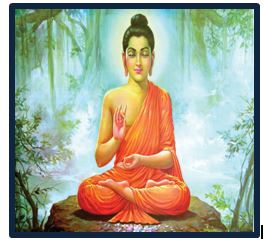
 Gautama Buddha, also known as Siddhartha Gautama, was a spiritual teacher and the founder of Buddhism. He lived in ancient India and his teachings have had a profound and lasting impact on the spiritual and philosophical landscape of the world. Here are some key aspects of his life and teachings:
Gautama Buddha, also known as Siddhartha Gautama, was a spiritual teacher and the founder of Buddhism. He lived in ancient India and his teachings have had a profound and lasting impact on the spiritual and philosophical landscape of the world. Here are some key aspects of his life and teachings:
Early Life: Siddhartha Gautama was born around 563 BCE (exact date uncertain) in Lumbini, in present-day Nepal. He was born into a royal family of the Shakya clan. According to tradition, his birth was marked by auspicious signs and prophecies.
The Four Sights and Renunciation: As a young man, Siddhartha lived a life of luxury and privilege within the palace walls. However, at the age of 29, he ventured outside the palace and encountered what are known as the “Four Sights”: an old man, a sick man, a corpse, and an ascetic. These experiences deeply affected him and led him to renounce his royal life in search of a deeper understanding of human suffering and the nature of existence.
The Great Renunciation and Enlightenment: Siddhartha left his family, wealth, and palace behind to embark on a spiritual quest. He practiced various forms of asceticism and meditation under different teachers. After six years of rigorous spiritual practice, he famously sat under a bodhi tree in Bodh Gaya, India, and vowed not to rise until he had achieved enlightenment. It is said that after a period of intense meditation, he attained enlightenment and became a Buddha, which means “awakened one.”
The Four Noble Truths and Eightfold Path: The core of Buddha’s teachings is encapsulated in the Four Noble Truths, which outline the nature of suffering (dukkha), its origin, its cessation, and the path to its cessation. The path to the cessation of suffering is elaborated in the Eightfold Path, which consists of ethical and mental guidelines for leading a balanced and harmonious life.
Teachings and Spread of Buddhism: Buddha spent the rest of his life teaching his insights to a diverse range of followers. His teachings emphasized compassion, mindfulness, ethical conduct, and the cultivation of wisdom. Buddhism spread throughout India and eventually to other parts of Asia, evolving into various traditions and schools.
Passing Away (Parinirvana): Buddha continued to teach and inspire for many years until his passing at the age of around 80. He is said to have attained Parinirvana, a state beyond death, in which an enlightened being is liberated from the cycle of birth and death (samsara) and achieves ultimate peace.
Legacy: Buddha’s teachings have left an indelible mark on the world. His insights into the nature of suffering and the path to liberation have provided guidance and solace to countless individuals seeking spiritual awakening. Buddhism, with its diverse practices and traditions, has had a profound influence on art, culture, philosophy, and ethics across the globe.
It’s important to note that much of what is known about Buddha’s life and teachings comes from ancient texts and oral traditions, and there may be variations in different Buddhist traditions and historical interpretations.
